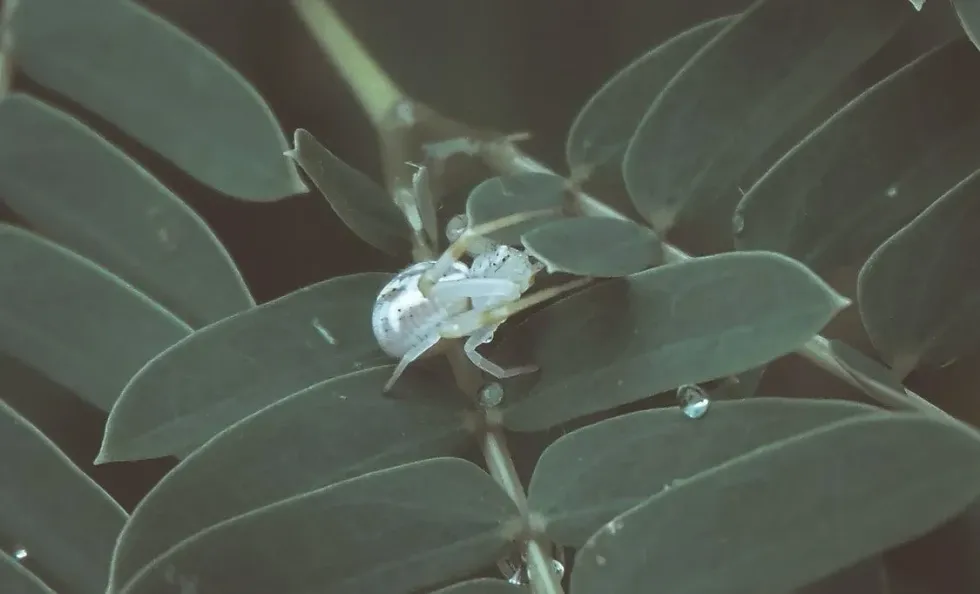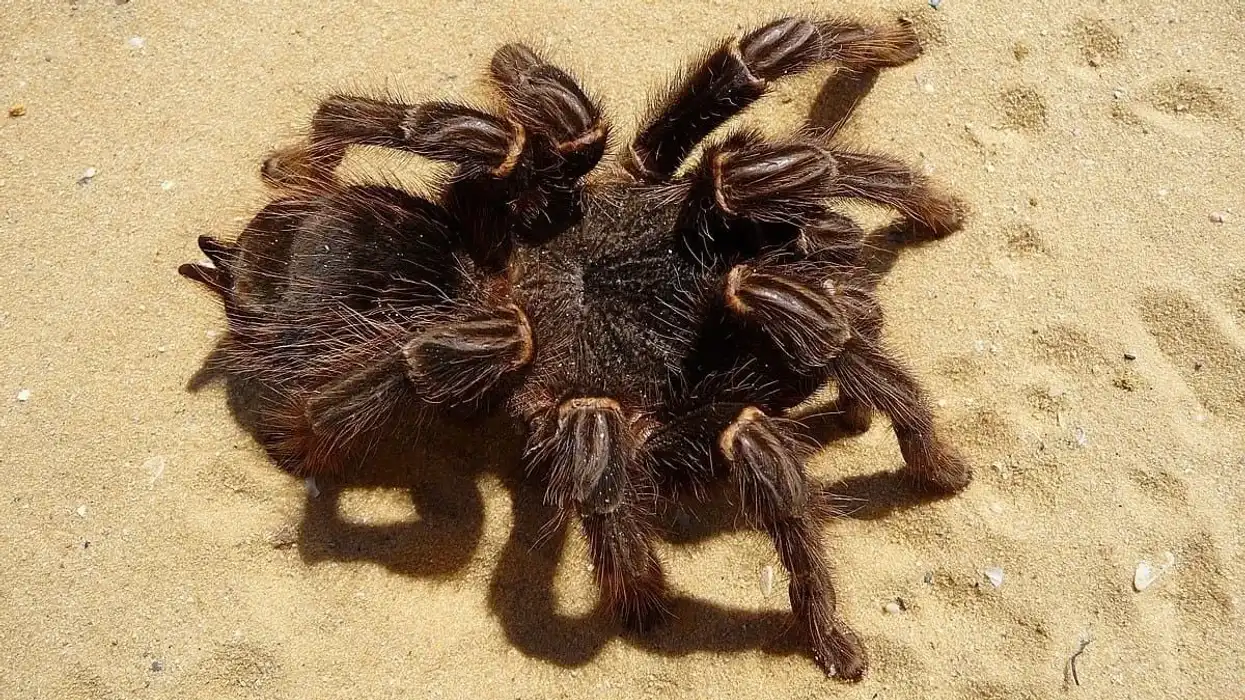When we pluck a colorful flower, we may be surprised or startled to see a colorful spider camouflaged on it. These are flower spiders of the species of Crab spiders whose scientific name is Misumena vatia.
They belong to the family of Thomisidae. Swedish archeologist and entomologist Carl Alexander Clerck first narrated these spiders in his book Aranei Svecici. They are widespread in the forest biomes of the Holarctic realm.
As their typical habitats are goldenrod flowers and milkweed plants, they are called Goldenrod crab spiders in North America. They are called Flower crab spiders as they walk sideways like a crab and forwards and backward. They do not spin webs to trap the prey.
They inject venom to immobilize them. Female Crab spiders are larger than males and have a round abdomen with stripes or spots.
To know interesting facts about more insects, do check our articles on darkling beetle facts and puss moth facts.
Flower Spider Interesting Facts
What type of animal is a flower spider?
A goldenrod crab spider is a species of crab spider of the family Thomisidae.
What class of animal does a flower spider belong to?
A flower crab spider belongs to the class Arachnida.
How many flower spiders are there in the world?
The number of flower spiders is not recorded, but they are prevalent and available worldwide.
Where does a Flower Spider live?
A goldenrod crab spider likes a temperate climate and lives on flowering plants in forest biomes.
What is a flower spider's habitat?
A goldenrod crab spider habitat is flowers and plants like goldenrod and milkweed in North America. Their habitats are other flowering plants like red clover, buttercups, fleabane, oxy eye daisy, and trillium.
Who does the flower spider live with?
This species is territorial, with only one inhibiting a flower. Male and female flower spiders live together only during mating.
How long does a flower spider live?
A female goldenrod crab spider lives for nearly two years, and male life expectancy is very short only one month.
How do they reproduce?
The sex ratio of flower crab spiders at the time of hatching is 1.5 females per male. By the time they become adults, this ratio increases from 2.5 -5.1 females to males.
The decrease in the number of males is because they travel long in search of a mate and lose their life due to environmental dangers. Females do not move and settle down on flowers.
They produce only one brood. The female flower crab spider builds their nest on milkweed, pasture roses, dogbane, and chokecherry plants.
Nearly 10% of males protect the undeveloped females while they molt into adults and after which they mate with the molted females. A female permits a male to enter her territory for mating only at the end of her second year of life.
After copulation is completed, the female lays eggs in the mid-summer and protects them in an egg sac inside a folded leaf or grass, and eggs take 3-4 weeks to hatch.
Like many other species, this Crab spider also protects its egg from egg predators, increasing the reproductive success rate. Some spiders abandon their nests before the spiderlings arrive.
During the female's second winter, soon after the eggs hatch, the female dies. Before they hatch, the young go through one molt within the egg sac.
Molting occurs in both females and males, while a female undergoes more molts than males before they reach the adult stage. The spiderlings look like mini-adults.
What is their conservation status?
The conservation status of Misumena Vatia is of the least concern.
Flower Spider Fun Facts
What does a flower spider look like?

Goldenrod crab spider has flat, wide, short, and crab-like bodies. They have eight eyes and eight legs, with their first two pairs of legs being the longest.
This crab spider uses those pairs of legs to catch its prey and always holds them open. The female is in a lighter color of white or yellow with dark red or brown markings on the abdomen.
The males are darker with red or brown colored outer shells. They have a unique white spot on their body and around their eyes. They especially have a couple of white and red stripes on their back and sides.
The color may change depending on the flower they are hunting, but it is not immediate and takes nearly 25 days. Young spiders have a strong likelihood to adapt to the background color.
How cute are they?
They are cute, and their color-changing property and characteristic of reflecting ultraviolet light make them look attractive to prey insects. Some other species of crab spiders spin beautiful patterns into their webs to attract and trap insects in their web.
How do they communicate?
Flower crab spiders communicate using visual signals at an ultraviolet wavelength that are not visible to humans. These signals manipulate flower signals and attract the pollinators more towards it.
The crab spider is very susceptible to motion inside and outside its visual range. This is possible because of the aid of sensory cells called Mechanoreceptors.
The other body parts that help to sense predators, prey, and mates are their tactile hairs that sense touch, sense mechanical stress, and vibrations, and Trichobotria that can sense breeze. The crab spider has a complex visual system of eight eyes but is not so prominent for communication as it can not sense stationary prey.
How big is a flower spider?
The female spiders are nearly 0.39 in (10 mm ), and the males are slightly smaller than females and are nearly 0.20 in (5 mm ). A Bumblebee is nearly three times larger than this crab spider.
How fast can a flower spider move?
The speed of flower crab spiders has not been measured as they do not move fast. They have the unique feature of walking sideways as well as backward and forwards.
How much does a flower spider weigh?
A male flower crab spider weighs nearly 0.00014 oz (4 mg), and the female weighs more than the male.
What are the male and female names of the species?
The male and female species do not have any specific names.
What would you call a baby Flower Spider?
A baby goldenrod crab spider is called a spiderling.
What do they eat?
The crab spider is a carnivore and eats insects like dragonflies, butterflies, hoverflies, bees, moths, and flies. They prey primarily on small syrphid flies, but most of their biomass is provided by bumblebees. Front legs are used to grab the insect and they bite it on the head.
Venom is released into the prey's body and immobilizes the insect. Small insects like thrips and dance flies are food for immature Crab spiders. When prey is scarce, they include pollen grains and nectar in their diet.
Are they poisonous?
Crab spiders have venom in their fangs which is very weak and not poisonous to humans or giant insects.
How did the flower spider evolve?
The flower crab spider has evolved over centuries with respect to its body color. Some of them change color to match the petals of flowers they occupy, which are yellow or white, and some other species are green to brownish and match leafy foliage or stems.
They adopted this camouflage to hide from predators as well as to ambush their prey.
Did you know...
Crab spiders are a very common species of spiders, and over 2100 species are found all over the world. Of them, 125 species are found in the United States. Many crab spiders live in the UK and the wandering crab spider is the most common across Britain.
Why they are called flower spiders?
Crab spiders are called flower spiders as their preferred habitat is various flowers like goldenrod, trillium, milkweed, buttercups, white fleabane, and red clover.
How did a normal spider evolve to be a Flower Spider?
This evolution of spiders dates back 400 million years. Normal spiders evolved from insects of class Arachnids. The flower crab spider (Misumena vatia) evolved from normal spiders through the genetic color variation phenomenon, which is slow and evolutionary.
Here at Kidadl, we have carefully created lots of interesting family-friendly animal facts for everyone to discover! For more relatable content, check out these cicada killer wasp facts and click beetle facts.
You can even occupy yourself at home by drawing one of our flower spider coloring pages.










